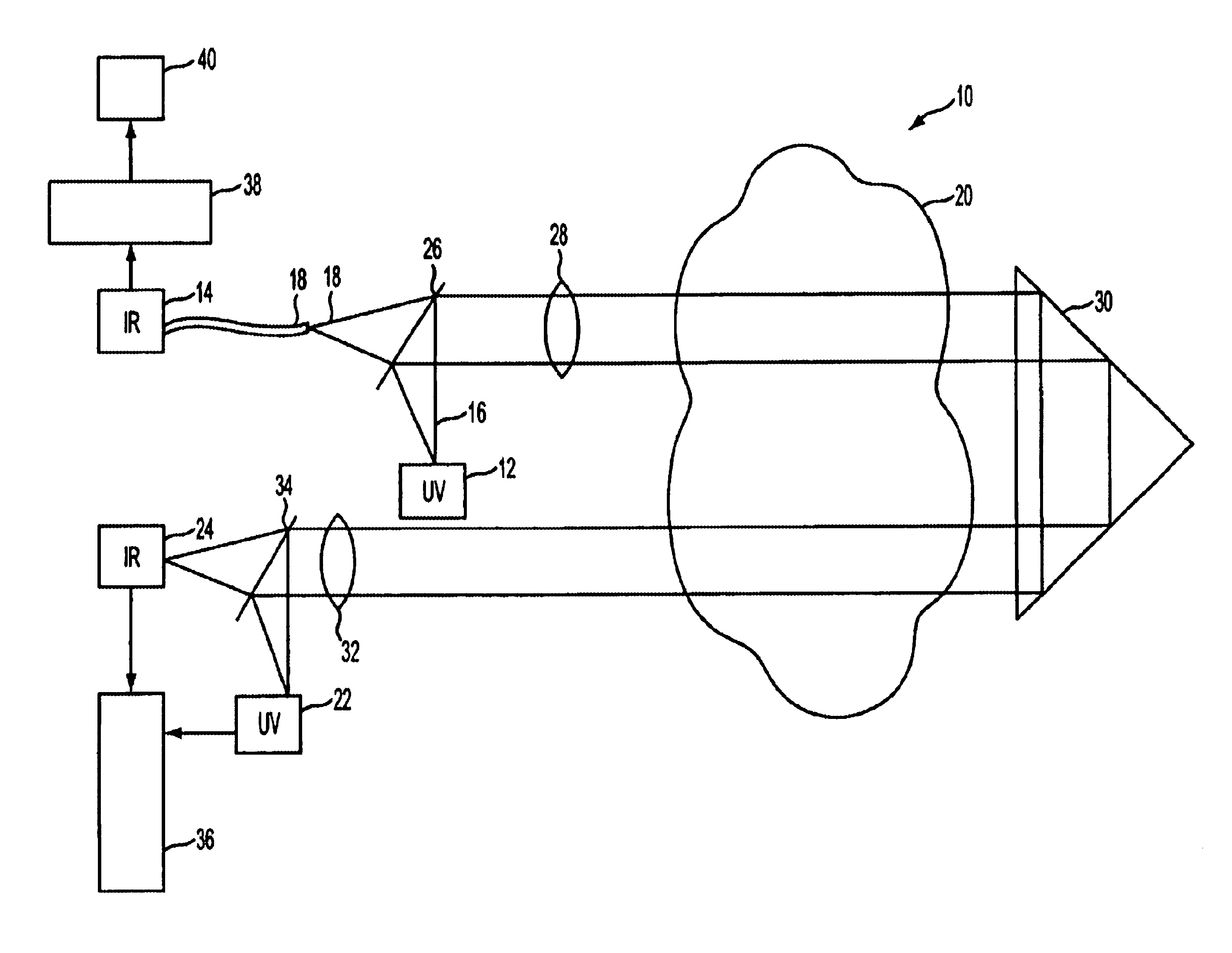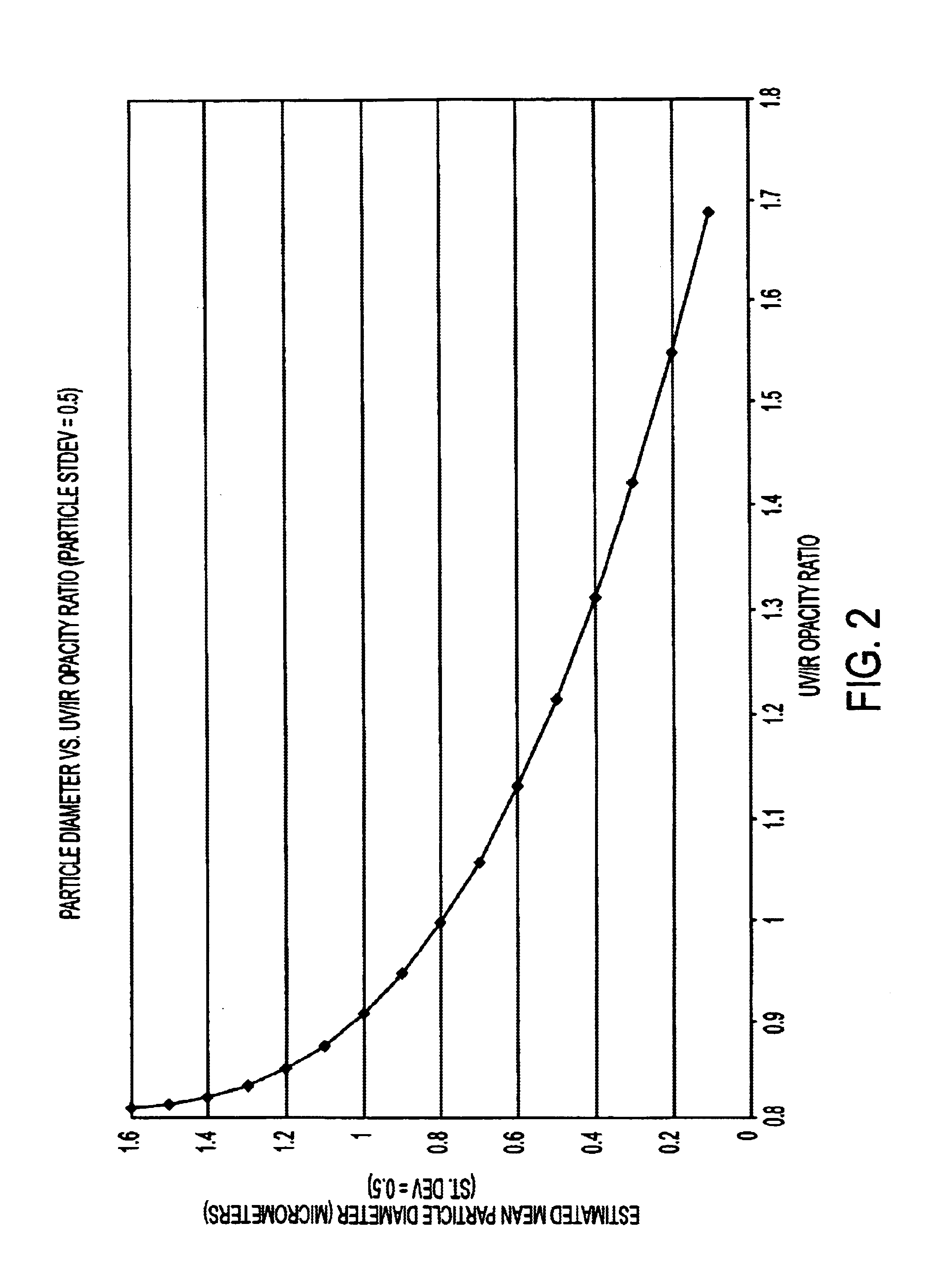Method and apparatus for measuring particulates in vehicle emissions
a technology for vehicle emissions and particulates, applied in the direction of material analysis, optical radiation measurement, instruments, etc., can solve the problems of limiting the use of typical opacity meters to direct tailpipe measurement, constant path length, and special harmful particle diameters less than 2.5 microns
- Summary
- Abstract
- Description
- Claims
- Application Information
AI Technical Summary
Benefits of technology
Problems solved by technology
Method used
Image
Examples
Embodiment Construction
The potential ill effect of small particles in vehicle exhaust is of growing concern to the medical community. The present invention provides an apparatus and method for detecting the particulate content of exhaust plumes containing small particles so that their impact on human health can be determined.
A remote sensing apparatus 10 according to the present invention that determines the particulate content and average size of particles in the exhaust plume of a vehicle is shown in FIG. 1. The sensing apparatus 10 comprises an ultraviolet light source 12 and an infrared light source 14 which respectively emit an ultraviolet light beam 16 and an infrared light beam 18 across an exhaust plume 20 of a vehicle passing in the roadway. An ultraviolet detector 22 measures the decrease in intensity of the ultraviolet light 16 after it passes through the exhaust plume 20. Similarly, an infrared detector 24 measures the decrease in intensity of the infrared light 18 after it passes through the ...
PUM
| Property | Measurement | Unit |
|---|---|---|
| wavelength | aaaaa | aaaaa |
| wavelength | aaaaa | aaaaa |
| diameter | aaaaa | aaaaa |
Abstract
Description
Claims
Application Information
 Login to View More
Login to View More - R&D
- Intellectual Property
- Life Sciences
- Materials
- Tech Scout
- Unparalleled Data Quality
- Higher Quality Content
- 60% Fewer Hallucinations
Browse by: Latest US Patents, China's latest patents, Technical Efficacy Thesaurus, Application Domain, Technology Topic, Popular Technical Reports.
© 2025 PatSnap. All rights reserved.Legal|Privacy policy|Modern Slavery Act Transparency Statement|Sitemap|About US| Contact US: help@patsnap.com



